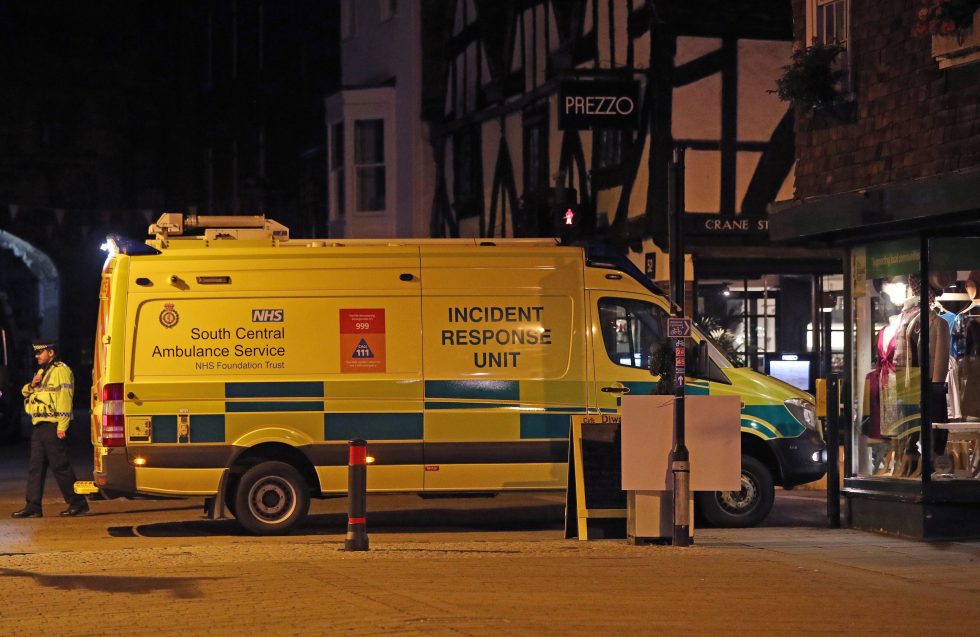Russian opposition leader Alexei Navalny is likely to survive a suspected poisoning with the nerve agent Novichok, according to the hospital treating him. There have now been at least six known cases of serious Novichok poisoning in the past two years. But only one victim tragically died from it.
Why is that? Is the substance less lethal than previously thought? Or could it be that the stockpile of the nerve agent is degrading?
Nerve agents were discovered through pesticide research. They belong to a group of substances known as organophosphorus chemicals, or “OPs” for short. There are literally thousands of OP substances, many of which can damage the body by inhibiting a family of enzymes known as “cholinesterases” that are critical to regulating the activity of the central nervous system in animals.
OP pesticides are much less toxic to humans than nerve agents because they have been designed to specifically inhibit insect cholinesterases. In contrast, nerve agents target human cholinesterases.
By disrupting the nervous system, Novichok and other nerve agents can kill people through asphyxiation or cardiac arrest. We know they are deadly. The nerve agent Sarin caused multiple casualties in 1995 when it was released in the Tokyo subway.
The nerve agent VX is thought to have killed Kim Jong-nam, the half brother of North Koreas leader Kim Jong-un, in just 20 minutes after it was allegedly smeared across his face. But all types of nerve agent poisoning can be treated with standard antidotes such as atropine and diazepam.
Little is known about the types of Novichok that have been synthesised or deployed in assassination attempts, other than that they tend to be liquids or powders.
The dose makes the poison
One of the fundamental principles of toxicology was first proposed by a 16th century alchemist, known as Paracelsus, who is often credited with the statement “sola dosis facit venenum”, or “the dose makes the poison”. It means that all substances are capable of being toxic if administered in a sufficient dose. This applies to normally innocuous chemicals such as water, as well as highly toxic materials such as nerve agents.
So have the recent Novichok victims somehow got smaller doses than intended? In the case of the poisoning of Sergei and Yulia Skripal in Salisbury, UK, in 2018, it appears that the poison was initially applied to a door knob.
While the applied dose may have been quite large, possibly equating to several thousand lethal doses, the amount transferred to their skin would have been a fraction of that. The palm of the hand is also one of the least permeable areas of the human body, which would reduce the rate of absorption into the body.
Subsequent contact with other surfaces through normal daily activities would be expected to further reduce the dose on the victims hands. This means that the net dose absorbed by the skin would have been relatively small in comparison to the original amount.
In the case of the Skripals, this was still sufficient to cause life-threatening toxicity after a delay of several hours. The fact that they were quickly given appropriate antidotes and supportive therapies was instrumental in their survival.

Police officers were subsequently also poisoned with the substance when searching Skripals home – and both survived. It is possible that they received an even lower dose of Novichok than the Skripals.
Soon after the incident, two more people were poisoned in nearby Amesbury. Tragically, one victim, Dawn Sturgess, died. She had unknowingly sprayed Novichok directly onto her wrist from a perfume bottle her partner had found nearby.
This would undoubtedly have resulted in a much higher dose than the Skripals received and was applied to a thinner, more permeable area of skin. The fact that the onset of poisoning was much faster (minutes) than in the case of the Skripals tends to support this idea.
Sadly, prompt medical treatment was unable to prevent her death. Antidotes can be effective against several multiples of a lethal dose. For example, military antidotes are generally designed to allow survival from at least five lethal doses of a nerve agent. However, no antidote will be effective against a massive dose.
Strurgess partner, Charlie Rowley, reportedly spilled some of the contents of the perfume bottle onto his hands, but immediately washed off the oily residue. Immediate decontamination is known to be a highly effective practice against nerve agents and is the recommended initial treatment strategy for chemically contaminated casualties in the UK and Read More – Source
[contf] [contfnew] 
arstechnica
[contfnewc] [contfnewc]







